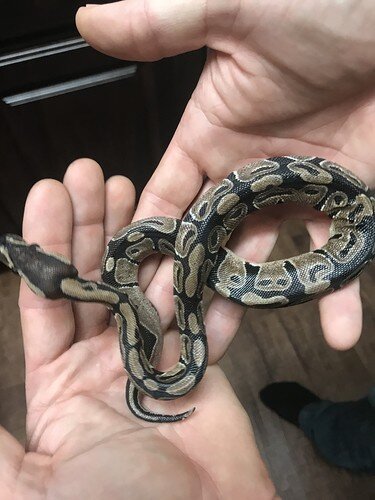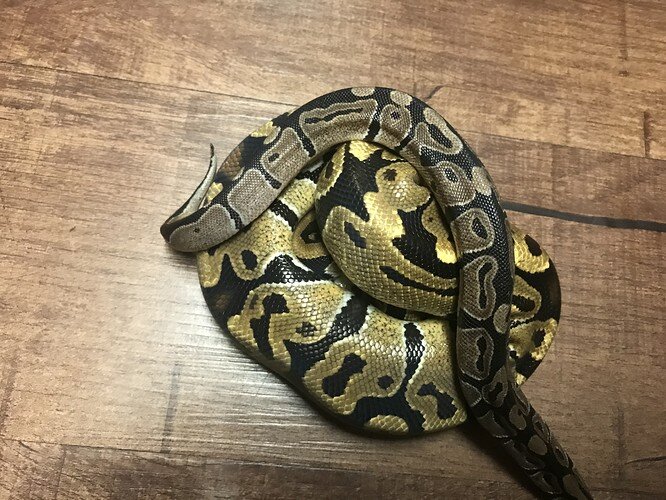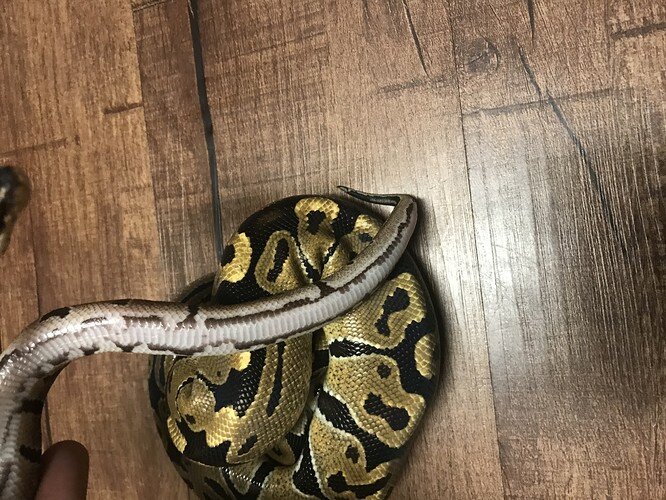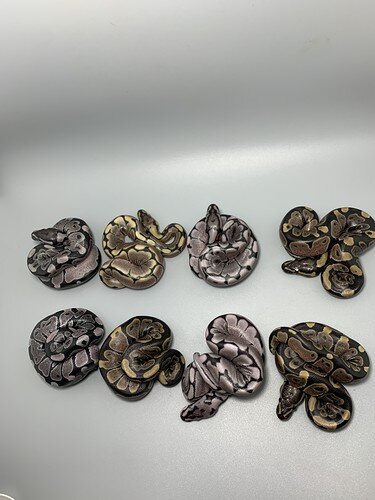We just rescued this little boy from PetSmart. He’s extremely thin. They said he did eat last week, after refusing food for a long time and being sent off for wellness check up and being sent back as cleared for issues. They said he was given a few preventative treatments vitamins and antibiotics or something like that I don’t remember exactly what it was they gave him. He was also only half shed so looked very thin and poorly cared for. I asked what they were asking for it in that condition and we settled on $45. I’m going to be getting him food tomorrow morning. I have nothing small enough for him here now. We have had a vpi axanthic before so we’re a little familiar with what they look like but my girl was a little more obvious than this one. What do you think? All input is appreciated. Thanks!
This is a VPI clutch I’m waiting on to shed. I would expect that snake to be substantially more silver at that size still. They don’t brown out for quite a while. Far left top and bottom are visual single gene VPI axanthics.
Personally I’m not seeing axanthic (VPI or otherwise) here. While they do brown out with age, yours is still pretty small and would look more silver
Ok cool. Yeah ours was more gray as well. We figure we will just get him up to a good weight and sell him as a very sweet pet on Craigslist. He let me pull the shed off his face, eyes etc. Really a nice little snake.
On the matter of feeding it back to health; take your time. Let it digest a full week before you feed it again.
When pythons eat their body pays a ‘fuel cost’ for a short period before they ‘switch’ to using energy from the prey item to fuel digestion. Add to the fact that a snake in that condition is likely stressed out and it can be dangerous to feed them too frequently.
Here is a paper that gives a great insight into python digestion
https://jeb.biologists.org/content/jexbio/213/8/1266.full.pdf
Stress has a big physiological effect on animals. Think of adrenaline as an example. When you get startled and have that adrenaline reaction, you’ve actually released your own natural ‘steroids’. They give you a boost for a bit, and then the let down occurs. What’s happening is that your body is now forced to metabolize the adrenaline and that has a price. For snakes it’s not much different. When stressed, they release corticosteroids which have to be metabolized at a cost to the system.
Here is a paper with some info about the physiological effects of stress on ball pythons (and BTS)
https://drum.lib.umd.edu/bitstream/handle/1903/20200/1155246.pdf?sequence=1&isAllowed=y
To try and keep it simple, a stressed snake is getting a reduced amount of energy from each meal. Meals come with an upfront energy cost to consume. Take your time, too much food too fast won’t be helpful.
Thank you👍
He’s eating good. He ate two fuzzies, smiled and gave me a little nod. I already have a good home ready for him to go to in a few weeks. It’s nice when things work out smoothly. Thanks again everyone.
Glad to hear he’s doing well and life is looking up for him!




